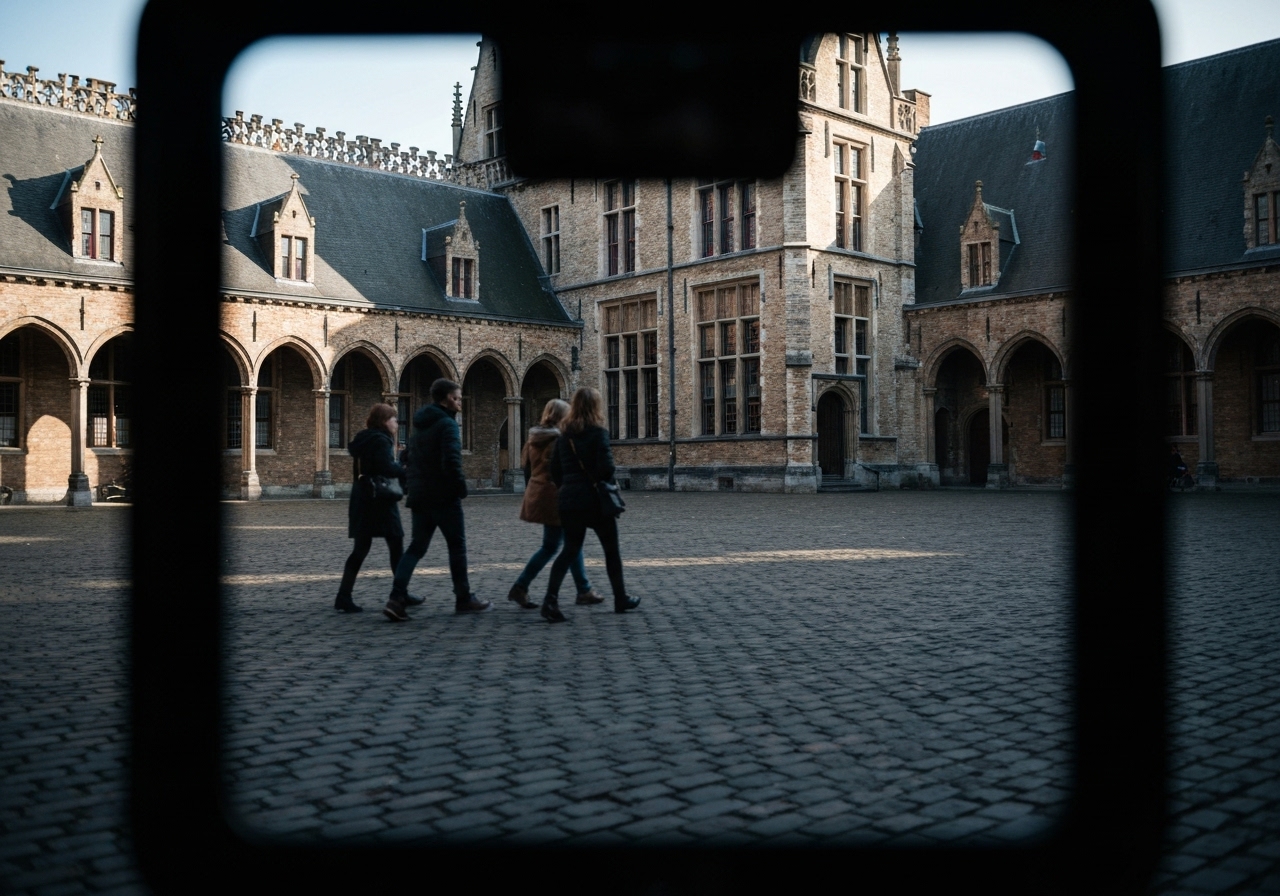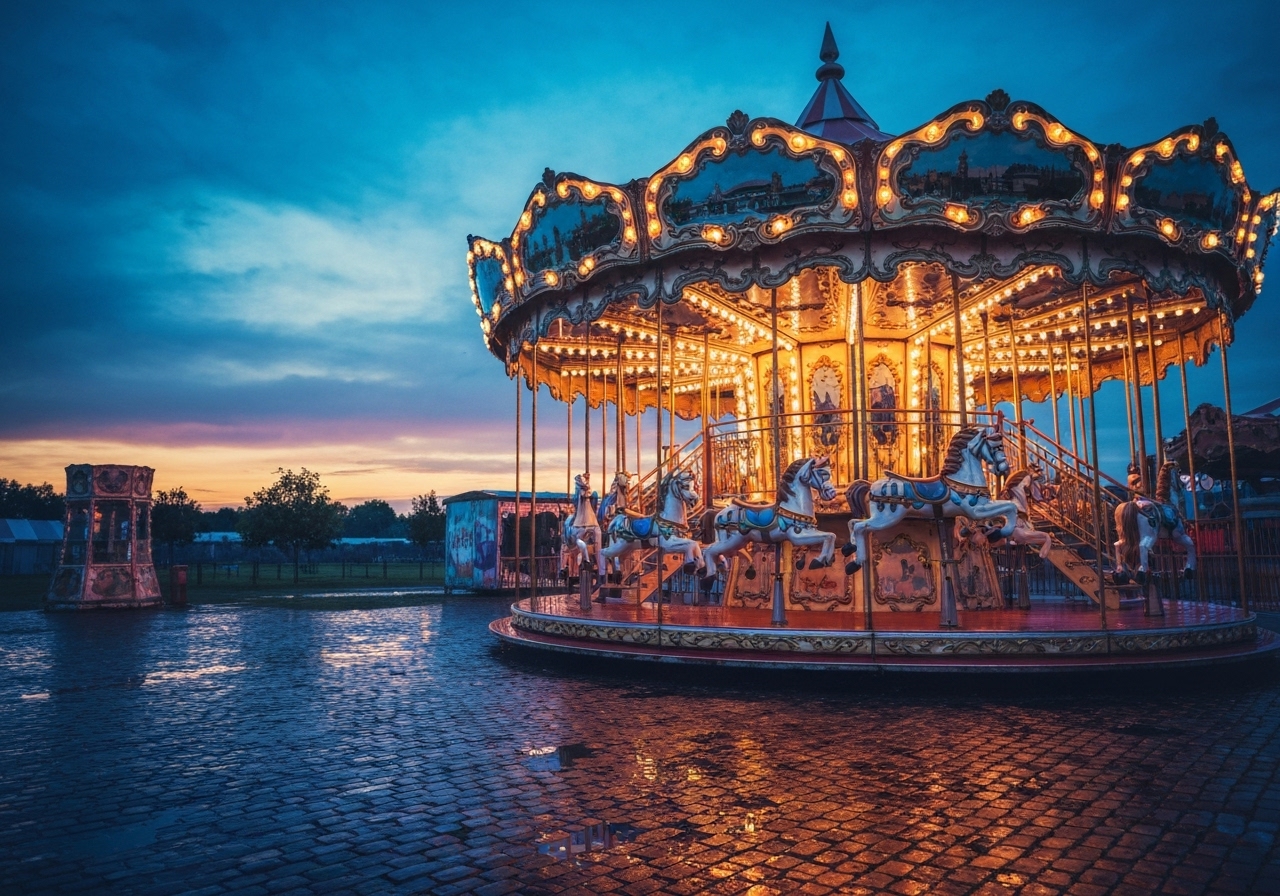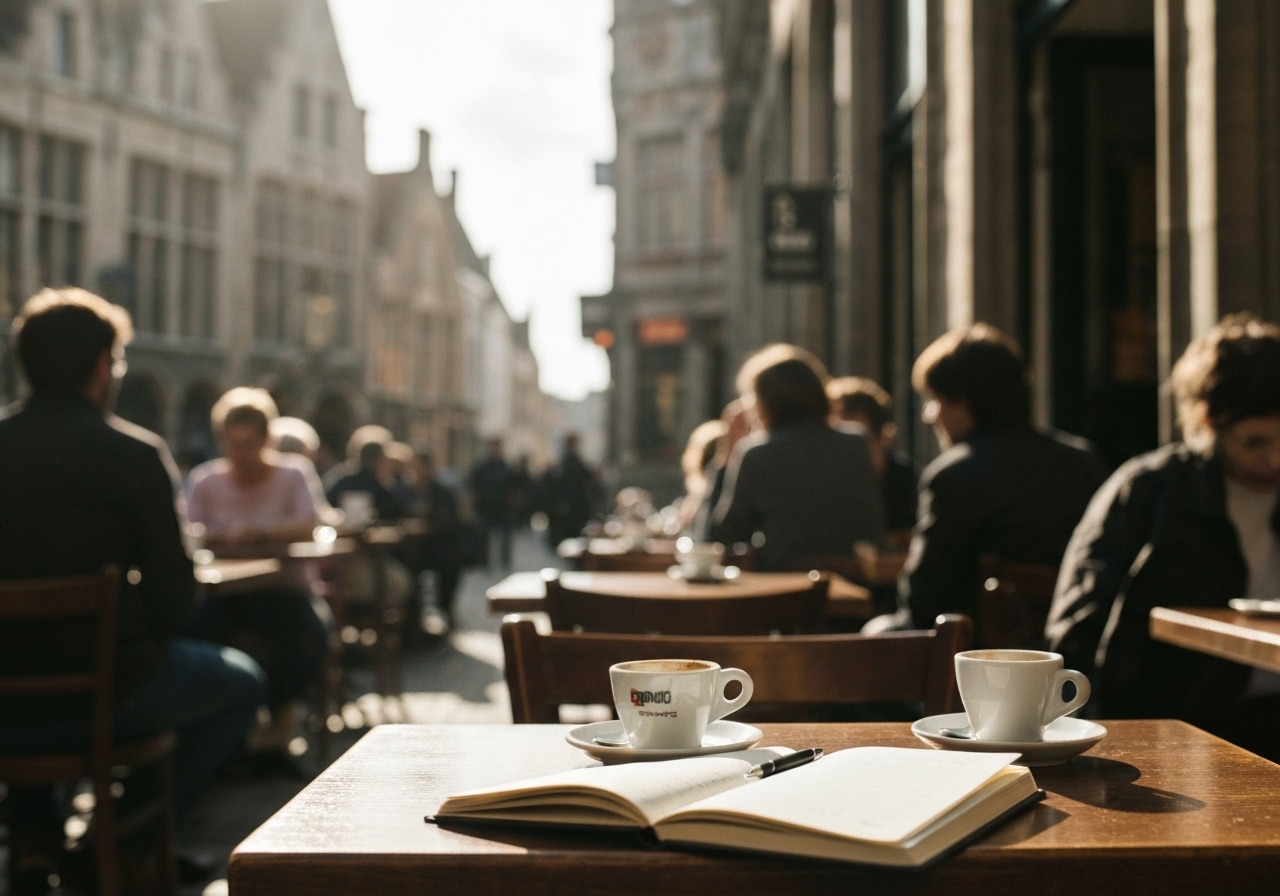


Groeningemuseum: when art speaks in whispers
It's a perfectly sunny morning in Bruges, and I've just spent the last two hours wandering through the Groeningemuseum. I arrived at 9:50 for their 10:00 opening, which gave me a moment to enjoy the quiet courtyard and mentally prepare for the art ahead. There's something special about being among the first visitors—the rooms still carry that morning stillness, and you can hear your own footsteps echoing slightly on the wooden floors.
I've been looking forward to this visit since my conversation with Henri at the waffle shop yesterday. He insisted that to understand Bruges—and Flanders more broadly—I needed to see the Flemish Primitives up close. "They tell our story better than any history book," he said. He wasn't wrong.
The museum itself isn't overwhelmingly large, which I appreciated. Sometimes these grand national galleries can be exhausting, but the Groeningemuseum is perfectly sized for a meaningful morning visit. The collection spans six centuries of Belgian visual art, but it's the 15th-century works that truly captivated me.
Standing before Jan van Eyck's "Madonna with Canon van der Paele," I found myself leaning in closer and closer, amazed by the microscopic details—individual hairs in the beard, reflections in armor, the texture of fabrics. These artists achieved a level of precision that seems impossible without modern technology. I spent nearly twenty minutes with this single painting, noticing new details each time I shifted position.
What struck me most was how these centuries-old works still communicate so clearly. The emotional expressions, the symbolic objects, the stories told through gesture and composition—they speak across time in a way that feels surprisingly immediate. I found myself wondering what our digital art and photography will communicate to people 600 years from now. Will they understand our visual language the way we can understand van Eyck's?
After the museum, I needed coffee and found a small café nearby with outdoor seating. The temperature is a delightful 24°C today—locals told me this is unusually warm for mid-September—and sitting in the sunshine with an espresso felt like the perfect complement to the cool, quiet museum halls.
I've been thinking about Henri's recommendation and how right he was. Sometimes the suggestions from locals lead to the most meaningful experiences. The museum wasn't on many "top 10" lists I'd seen online, but it offered a deeper connection to this place than any chocolate shop or canal tour could provide (though those are wonderful too).
I have one more day in Bruges before my train tomorrow, and I'm feeling that familiar mix of satisfaction and slight sadness that comes with preparing to leave a place. There's still so much to see here, but I'm learning that travel isn't about seeing everything—it's about seeing some things deeply.
This afternoon, I'm thinking about revisiting Minnewater Park while the weather is so beautiful, perhaps finding a bench under one of those magnificent willows to read for a while. The park was nearly empty when I visited earlier in the week, and with the sunshine today, I imagine the light on the water will be spectacular.
As for tomorrow's journey, I've already checked my train details three times (old habits), and I'll probably check again before bed. I'm finding myself less anxious about transitions than I was at the beginning of this trip, but still comforted by preparation.
Four cities into this journey, and I'm starting to find my rhythm. Each place teaches me something different about how to travel, how to see, how to be. Bruges has taught me to slow down, to look closely, and to listen to the quiet stories that old places tell when you give them time to speak.
![The courtyard outside Groeningemuseum, bathed in morning light]